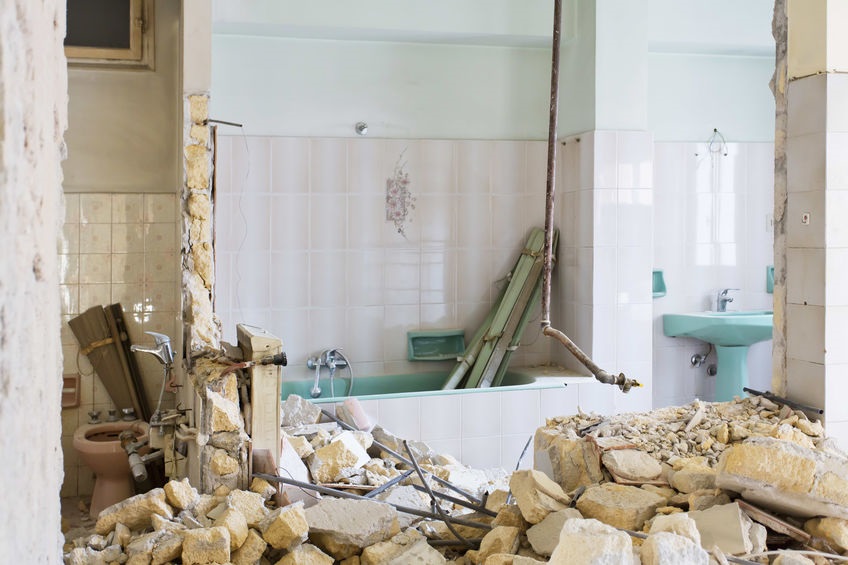Construction and demolition of commercial and residential structures, roads, bridges, and other public works structures can produce a significant amount of construction debris. The debris can occur from a remodel or complete take-down of an existing structure.
Common Types of Construction Debris Material
While construction debris can vary considerably, it typically contains heavy and bulk materials such as the following:
- Asphalt
- Bricks
- Concrete
- Drywall
- Ductwork
- Fixtures
- Glass
- Gravel
- Insulation
- Metals
- Plastics
- Roofing materials
- Salvaged building components
- Trees, stumps, rock, stone, and uncovered earth
- Windows and glass
- Wiring
- Wood
Unfortunately, some residential and commercial property owners simply throw away construction materials without thinking about where it ends up. This type of debris can quickly clog landfills to the point where they run out of room. The good news is that several environmentally friendly options exist as well.
Risks Involved with Do-It-Yourself (DIY) Construction Debris Removal
Although clean-up is necessary on any type of construction site, it’s often not cost-effective for the demolition crew to do it themselves. That is because the time spent removing waste doesn’t produce any income for the contractors. The work can also be heavy and dangerous.
Broken slabs can weigh several hundred pounds while any materials containing lead paint or fiberglass can cause illness when inhaling the particles. It’s also important to consider the wear on the contractor’s vehicle, cost of fuel, and other expenses associated with dumping the construction debris.
How to Minimize Construction Waste
Residential, commercial, and government contractors can all reduce the amount of waste they produce during construction and demolition by taking a proactive approach to planning. The National Association of Home Builders recommends writing the following four objectives into a waste management plan for construction and demolition:
- Use fewer materials during the design phase. It’s easy to accomplish this by sizing the designs right to reduce the number of unnecessary cuts.
- Work with a designer from the beginning of the project to get assistance with ordering standard sized materials to keep both cost and waste as minimal as possible.
- Select the most durable materials available to reduce the number of repairs the structure may need through the years.
- Recycle materials such as plywood, paper, metal, and cardboard whenever possible.
- Check with suppliers to see if they accept unused material for return at the end of the project.
Consider Working with a Waste Removal Contractor
Whether it’s a homeowner completing a DIY project, a commercial contractor, or a residential contractor, it often makes the most sense to hire a waste removal contractor for post-construction clean-up. The waste removal contractor should come to the home or job site to provide a free estimate after personally assessing the amount of debris it must haul. The person or company hiring the waste removal contractor should also find out if it charges by weight or volume of waste.
Choosing to hire out construction debris removal is the best option to protect the environment. Waste removal contractors typically have numerous contacts with recycling centers, charities, and salvage yards and will attempt to bring materials there first. Homeowners and commercial contractors usually don’t have the same contacts, which is which is why so much construction debris ends up in landfills in the first place.

